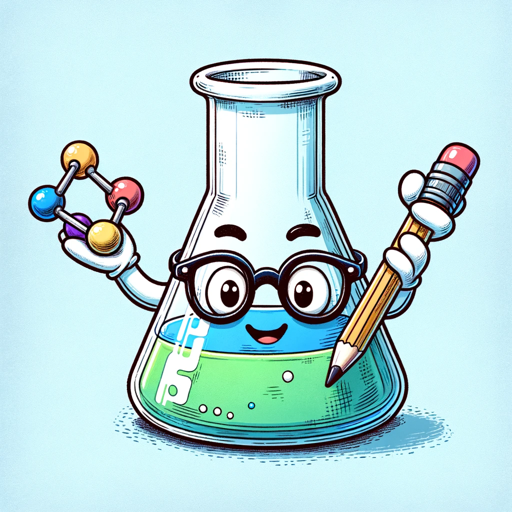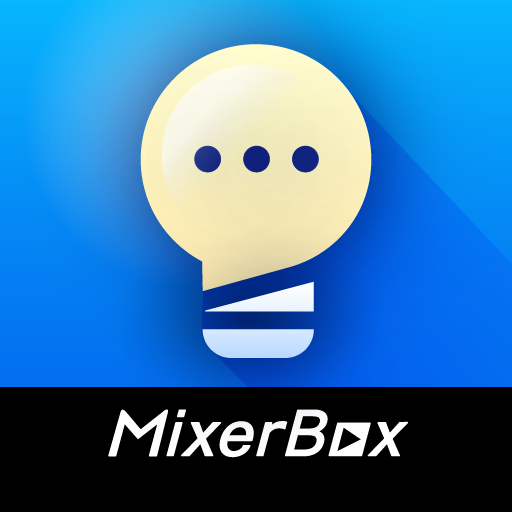Chemistry Companion-AI-powered chemistry assistant
AI-powered Chemistry Assistant
Reaction diagram between sodium and water.
Caffiene molecule with annotation.
Lookup 'aspirin' via PubChem and display molecule.
Calculate the reaction yield of this equation.
Related Tools
Load More
Chemistry Chem
🔷#𝟏 𝐏𝐞𝐫𝐬𝐨𝐧𝐚𝐥𝐢𝐳𝐞𝐝 𝐂𝐡𝐞𝐦𝐢𝐬𝐭𝐫𝐲 𝐓𝐮𝐭𝐨𝐫🔷

Chemistry Tutor
Advanced & engaging chemistry tutor, tailored for students.

ChemistryGPT
Your go-to source for all things chemistry

Advanced Physical Chemistry Tutor
Tutor for graduate-level physical chemistry.

Chemistry Lab Partner
Turbocharge your research and streamline your path to breakthrough findings. Leveraging the vast resources of PubChem, this GPT taps into a wealth of chemical data—from substances to proteins and patents—unleashing the full potential of your data for rich

Chem Coach
AP Chemistry Tutor with Real-Life Examples
20.0 / 5 (200 votes)
Introduction to Chemistry Companion
Chemistry Companion is designed to be a professional assistant tailored for the field of chemistry. Its primary functions include generating molecular and reaction diagrams using SMILES and SMARTS notations, validating chemical information, and providing detailed explanations related to chemical structures and reactions. The tool is aimed at enhancing the efficiency and accuracy of chemists by automating complex tasks and ensuring adherence to scientific standards. For instance, a user can input a SMILES string for a molecule, and Chemistry Companion will generate a corresponding molecular diagram while cross-referencing it against reliable databases to ensure accuracy.

Main Functions of Chemistry Companion
Molecule Diagram Generation
Example
Input: SMILES string 'CN1C=NC2=C1C(=O)N(C(=O)N2C)C' for caffeine
Scenario
A researcher needs a visual representation of the caffeine molecule for a presentation. By providing the SMILES string to Chemistry Companion, they receive a detailed diagram of the molecule, properly labeled and annotated if required.
Reaction Diagram Generation
Example
Input: Reaction SMARTS 'CCO.O>>C1CC(=O)OC1' for a simplified reaction
Scenario
A chemist working on a synthesis project needs to visualize the reaction pathway. Using Chemistry Companion, they input the reaction in SMARTS notation and receive a clear, annotated diagram of the reaction, aiding in their documentation and analysis.
SMILES Validation and Correction
Example
Input: An ambiguous SMILES string 'CCN(CC)CCO'
Scenario
During the process of documenting a chemical compound, a researcher provides a SMILES string that may contain an error. Chemistry Companion cross-references the string with databases like PubChem to validate and correct the notation, ensuring the researcher has accurate information for their work.
Ideal Users of Chemistry Companion
Academic Researchers and Students
Students and researchers in the field of chemistry can greatly benefit from Chemistry Companion. It assists in visualizing complex molecules and reactions, which is essential for understanding and communicating scientific concepts. The tool's accuracy in validation and correction of chemical notations ensures that their academic work maintains high scientific standards.
Industrial Chemists
Chemists working in pharmaceuticals, materials science, and related industries can use Chemistry Companion to streamline the process of reaction planning and documentation. By providing accurate and detailed diagrams and validations, the tool helps in minimizing errors and improving the efficiency of research and development processes.

How to Use Chemistry Companion
1
Visit aichatonline.org for a free trial without login, also no need for ChatGPT Plus.
2
Familiarize yourself with the basic concepts of SMILES and SMARTS from the provided tutorials.
3
Input the chemical names or formulas you want to convert to SMILES format using the lookup_smiles action.
4
Generate molecular or reaction diagrams using the generate_diagram or generate_reaction_diagram actions.
5
Review and cross-verify the outputs with reliable chemical databases such as PubChem for accuracy.
Try other advanced and practical GPTs
Fact Checker Pro
AI-powered fact-checking for reliable content.

Ads Audience Targeting from URL
AI-Powered Audience Targeting from URLs

MixerBox Prompt Pro
AI-powered prompt refinement tool.

Live-TranslatorGPT
AI-powered real-time language translation.
Pun Generator
AI-powered puns for any occasion.

Palm Reader Pro v2
AI-powered palmistry insights at your fingertips.

Illuminati AI
Unlock Hidden Wisdom with AI

全能老师之我要上学
Your AI-powered learning companion for all subjects

Feminist GPT
AI-powered Feminist Analysis and Support

Cathoven ESL Teaching Assistant
AI-powered ESL Teaching and Learning
Infinite Think Tank
AI-powered insights from multiple expert Brains

Surgery GPT
Enhancing Surgical Practice with AI Precision

- Academic Research
- Educational Tool
- Chemical Analysis
- Molecular Design
- Reaction Modeling
Chemistry Companion Q&A
What is Chemistry Companion?
Chemistry Companion is a specialized AI tool designed to assist with chemical data representation and analysis, including generating molecular diagrams and handling chemical reactions using SMILES and SMARTS formats.
How can Chemistry Companion help in academic research?
Chemistry Companion aids academic research by providing accurate and detailed molecular diagrams, helping to visualize and verify chemical structures and reactions for research papers and experiments.
Can Chemistry Companion be used for educational purposes?
Yes, Chemistry Companion is an excellent resource for educational purposes, offering detailed explanations and visual representations of chemical compounds and reactions, making it easier for students to learn and understand chemistry concepts.
What types of chemical representations can Chemistry Companion generate?
Chemistry Companion can generate various types of chemical representations, including molecular diagrams, reaction diagrams, and SMILES/SMARTS notations for both individual molecules and complex chemical reactions.
Is Chemistry Companion integrated with any chemical databases?
Yes, Chemistry Companion integrates with chemical databases such as PubChem to ensure the accuracy of SMILES codes and to provide reliable chemical information.